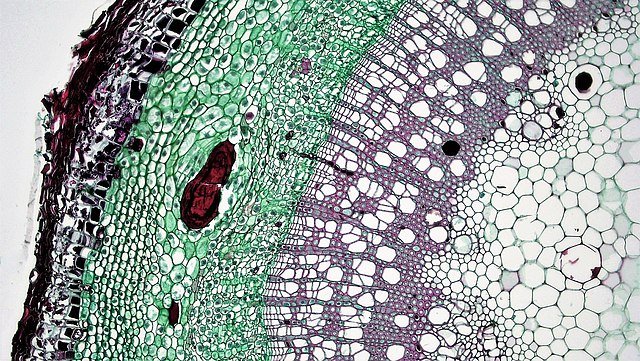Identifying distinct stem cell types and monitoring their differentiation is essential for developing novel therapies
Stem cell research originated in the 1950s when it was discovered that mice which had received a lethal dose of radiation could recover following intravenous administration of normal adult mouse bone marrow cells. Specifically, the transplanted cells were shown to replace the destroyed hematopoietic system with a new, sustained source of lymphoid and myeloid cells, sparking significant interest in how this repopulating activity might be exploited for therapeutic use. At around the same time, flow cytometry was evolving, and it has since become a core technique for stem cell research. By allowing researchers to use a combination of markers to accurately identify stem cells within a heterogeneous population, flow cytometry supports therapeutic development for a broad range of disease states.
Types of Stem Cells
Stem cells are undifferentiated cells with the unique ability to self-renew. They are broadly categorized as pluripotent stem cells (PSCs), which can differentiate into any cell type within the body, and adult stem cells, which can only differentiate into specialized cell types of the tissue or organ in which they reside. Pluripotent stem cells comprise embryonic stem cells (ESCs), which are derived from the inner cell mass of the mammalian blastocyst, and induced pluripotent stem cells (iPSCs), which are mature human adult cells that have been reprogrammed into an embryonic stem cell-like state. Examples of adult stem cells include hematopoietic stem cells, which reside in tissues such as bone marrow, peripheral blood, and placenta, and differentiate into the mature blood cell types; mesenchymal stem cells, which can be found in bone marrow, adipose tissue, and umbilical cord, and differentiate into tissues such as bone, muscle, and skin; and neuronal stem cells, which exist in the brain and spinal cord, and differentiate into cell types including neurons and glial cells. In addition, cancer stem cells can be isolated from various tumors.
Stem Cell Biomarkers
Antibodies that specifically recognize cellular biomarkers are essential tools for stem cell research. Stem cell biomarker antibodies are used for monitoring differentiation over time or in response to a particular treatment and for enabling identification of different cell types. Choosing whether to use cell surface and/or intracellular biomarkers largely comes down to the aims of a particular experiment. In situations where live cell populations must be isolated for further analysis, the ability to identify different stem cell types based on surface marker expression is critical.
Commonly used surface markers for hematopoietic stem cells include CD34, CD49f, and CD90, which are frequently combined with negative staining for markers such as CD38 and CD45RA. Mesenchymal stem cells can be identified by staining for markers that include CD73, CD90, and CD105, combined with negative staining for markers including CD11b, CD19, and HLA-DR. Neuronal stem cell markers include CD24, CD29, and CD184, which may be used in combination with negative staining for CD44 and CD271. Pluripotent stem cells are often identified using markers such as SSEA-3, SSEA-4, and TRA-1-60, combined with negative staining for SSEA-1. Markers for identifying cancer stem cells vary according to the type of cancer in question, but include ErbB2/Her2, Lgr5/GPR49, and alpha-Fetoprotein/AFP for identifying breast, gastric, and liver cancer stem cells, respectively.
Where stem cells will be fixed and permeabilized, intracellular biomarkers, like transcription factors and structural proteins, provide additional means of identification. Again, the expression of these molecules varies for different cell types.
Goals for Stem Cell Research
Although stem cells are used for many different research applications, it is their potential for tissue engineering that has generated the most interest. With demand for transplantable tissues and organs far greater than supply, stem cells hold vast promise as a renewable source. Currently, efforts are focused on generating stem cells in sufficient quantities to replace lost or damaged tissues. Both pluripotent and adult stem cells exist in very low numbers, and the use of the latter is further complicated by the fact that adult stem cells have a very limited capacity to divide. Other important goals for stem cell research include developing reliable methods for promoting differentiation into the required cell type(s), ensuring transplanted cells are not rejected by the recipient’s immune system, and maintaining long-term functionality to avoid the need for repeated transplantation.
Supporting Your Flow Cytometry-Based Stem Cell Research
Flow cytometry remains the most widely used technique for stem cell research. With its ability to rapidly process large numbers of cells, using multiple parameters for identification, flow cytometry enables even the scarcest of stem cells to be captured in sufficient numbers for accurate end-point analysis or downstream use. Moreover, correctly performed flow cytometry and/or cell sorting experiments capture cell populations with high purity and viability.
When it comes to streamlining your workflow, FluoroFinder has you covered! Our Antibody Search function enables you to easily find stem cell biomarker antibodies that have been validated for flow cytometry, while our Spectra Viewer allows you to quickly compare over 900 fluorophores from all suppliers in one intuitive platform. Optimize your panel with our Panel Builder to view fluorophores and antibodies from over 60 suppliers in the context of your instruments and configurations. For additional guidance, our support team is always happy to help!
Sign up for our eNewsletter to receive regular updates about flow cytometry, including how this technique can be used to advance stem cell research.





